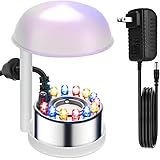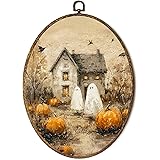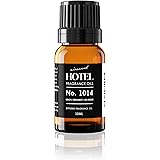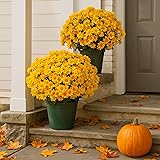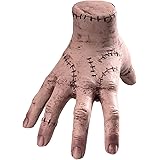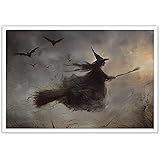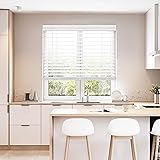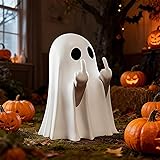Are you feeling as though your home decor is stuck in a time warp? Many homeowners find themselves surrounded by trends that have simply run their course. The good news is a refreshing wave of interior design trends is on the horizon. This article will help you navigate the exciting landscape of 2025 interior design, ensuring your space feels modern and invigorated.
The video above offers a fantastic overview of what’s coming. We will delve deeper into these 2025 interior design trends, providing additional insights and actionable tips. Get ready to transform your living spaces with styles that speak to both comfort and cutting-edge aesthetics!
1. Embracing Japanese-Inspired Design: Wabi-Sabi & Japandi
The serenity and thoughtfulness of Japanese aesthetics are set to make a significant impact in 2025 interior design. Two distinct, yet related, philosophies will be gaining prominence: Wabi-Sabi and Japandi.
Wabi-Sabi: The Beauty of Imperfection
Wabi-Sabi is a design philosophy that champions the beauty found in imperfection, impermanence, and authenticity. It is believed that a deeper appreciation for natural wear and tear, along with the unique story behind each object, is fostered. This trend is not about flawlessness. Instead, it encourages a reverence for the natural aging process of materials.
Achieving this look is often accomplished through specific material choices. Weathered wood, with its visible grain and natural distress, is frequently seen. Hand-thrown pottery or ceramics, often exhibiting slight irregularities, are valued. Natural textures, perhaps woven materials or stone with minor dents and divots, are embraced. This approach introduces character and depth to any room. Renowned designers like Loren Kreiss and Amber Lewis are known to incorporate these elements. The BELYSSE Interior Trends 2025 report also highlights this focus on natural, imperfect textures.
Integrating Wabi-Sabi can be quite simple. A handmade ceramic vase or bowl can be introduced. Rustic wood items, such as a bowl or a small bench, are often utilized. These pieces bring a rich texture and a sense of history into your home. They stand as a quiet testament to the beauty that is found in the passage of time.
Japandi: A Harmonious Blend of Styles
Japandi represents a thoughtful fusion. It marries the minimalist, utilitarian aesthetic of Scandinavian design with the natural material focus of Japanese design. The resulting style is both peaceful and highly functional. It fosters a strong connection to natural elements, creating spaces that feel grounded and calm.
This design style is often observed through specific furniture choices. A low wood bench might be selected. A very neutral rug, perhaps in a subtle beige, is often preferred. Materials like bamboo or cork are key components. Bamboo flooring can be installed. Smaller items, such as bamboo cutting boards or bowls, are easily incorporated into home decor. This blend ensures that utility and natural beauty are both honored.
2. Mixing Metals and the Resurgence of Copper Finishes
In 2025, the art of mixing metals will be celebrated. It allows for the creation of layered and visually rich spaces. This approach moves beyond the traditional uniformity of matching all metal finishes. Instead, it invites a curated, eclectic feel.
Mixed metals are expected to be prevalent in bathrooms and other areas. Combinations like brass with matte black or bronze with polished nickel will provide a balanced aesthetic. This strategy prevents a space from feeling monotonous. It also adds a bespoke quality, making a room feel thoughtfully designed rather than mass-produced.
Copper is also making a significant comeback. This metal adds undeniable warmth and richness to any interior. Its unique reddish-brown hue can infuse a space with an inviting, almost glowing quality. The Lone Fox, a notable designer, has even showcased wrapping a dishwasher in copper, demonstrating its versatile application. A copper-finished metal frame mirror could be considered. Decorative items, like a mixed metal candle holder, are excellent additions. Swapping out cabinet hardware for copper handles or pulls offers a simple, impactful update. This trend reminds us that metal finishes are not merely functional; they are integral to a room’s overall mood and sophistication.
3. Earthy, Warm Color Palettes
Connecting with the natural world through color will be essential in 2025 interior design. Earthy, warm color palettes are set to dominate. These tones create environments that are both cozy and deeply grounded.
Think about rich browns, muted greens, and soft terracottas. These colors evoke a sense of calm and organic serenity. As designer Molly Kidd suggests, brown can be used in place of black. This substitution helps to keep spaces earthy rather than stark. Mixing textures within these palettes also prevents a “sludgy” appearance, ensuring visual interest is maintained.
Browns and greens in upholstery and decor have a powerful effect. They contribute to a calm, organic atmosphere. Major paint brands are already aligning with this trend. Benjamin Moore’s 2025 Color of the Year, Cinnamon Slate, is a delicate blend of heather plum and velvety brown. This choice brings a versatile and cozy element to interiors. Sherwin Williams echoes this with its Chrysalis palette, featuring warm neutrals like Grounded and deep, earthy browns like Sealskin. These palettes invite nature’s calming presence indoors. They help to create a sanctuary from the outside world.
4. Bringing Nature Indoors: Biophilic Design
The concept of “bringing the outside in” is evolving. In 2025, designs will focus more intensely on natural materials and lush greenery. This approach, often referred to as biophilic design by experts like Nick Lewis, aims to reconnect individuals with nature within built environments.
This mega-trend addresses a growing yearning for connection to the natural world. Materials such as wood, natural stone, and various plants are central to this design philosophy. The BELYSSE trend report further supports this, emphasizing natural fibers in flooring and rugs, like sisal and bamboo. These materials provide a sense of groundedness, fostering a strong connection to the environment. Their inherent textures and earthy tones contribute to a calming aesthetic.
Incorporating biophilic elements can be done in several ways. Small furniture pieces, such as a marble-top side table, are a subtle start. Indoor plants like a fiddle leaf fig or a snake plant add immediate life and oxygen. Woven bamboo baskets or other wooden decor pieces introduce natural textures. Natural stone facades, used for fireplaces or as feature walls, create dramatic focal points. Designers like Shea McGee and Amber Lewis frequently demonstrate this. Their work shows how stone can anchor a room, grounding it with geological beauty.
5. Embracing Handmade and Artisanal Pieces
A significant shift is occurring in home decor preferences. In 2025, mass-produced decor will be eschewed. Instead, handmade and artisanal pieces will gain immense popularity. These items add a personal touch. They also showcase unique craftsmanship and character. Each piece often tells a story, perhaps reflecting cultural heritage or the journey of its creation.
As Sweet Magnolia notes, heritage and handmade details bring warmth and individuality. They offer a sense of history that mass-produced items simply cannot replicate. Loren Kreiss of Kreiss Interior Design confirms that mass-produced items are fading. The BELYSSE trend report highlights a “folklore trend,” which values authenticity and craftsmanship. This approach encourages a deeper connection with both the product and its creation process. It is about investing in items with soul and integrity.
To integrate this trend, several options are available. Hand-thrown pottery can be introduced. Woven baskets, handmade blankets, or a unique hand-carved wooden stool can add character. These pieces enrich a room without requiring permanent changes. Affordable sources include Facebook Marketplace, estate sales, and local swap meets. Travel often provides opportunities to discover unique artisan goods. DIY tutorials on platforms like YouTube also offer guidance. They show how to achieve a handmade look for lamps and vases, often by texturing thrift store finds. This trend allows for personal expression, creating a home that truly reflects its inhabitants.
6. Layering Different Textures and Materials
Creating visually rich and dynamic spaces will be key in 2025. This will be achieved through the strategic layering of different textures and materials. According to Judy Dunne, serene bedroom spaces are often built on a restrained palette, yet with abundant texture. This approach cultivates a sense of oasis within the home.
The BELYSSE trend report highlights the importance of textures for sensory experiences. Their “flavor trend” notes that plush velvet and fluffy textures invite touch. These elements can transform spaces into vibrant, almost “edible” experiences. This sensory approach makes spaces feel both luxurious and inviting. It creates a multi-dimensional environment that engages more than just sight.
To embrace this trend, several items can be considered. Textured throw blankets or velvet cushions add immediate depth. Velvet curtains introduce a soft, rich feel. A woven rug can anchor a space with its unique pattern and feel. Shag carpets or faux fur rugs provide luxurious tactile experiences. A textured ceramic lamp or a stone sculpture offer portable ways to incorporate layered textures. Affordable sources for these items include HomeGoods, Ross, and Amazon. These retailers provide accessible options for creating a home rich in varied sensory appeal.
7. Minimalist Maximalism: The Art of Balanced Boldness
An intriguing paradox will emerge in 2025: Minimalist Maximalism. This trend skillfully combines the simplicity of minimalism with bold, statement-making decor. It is about finding harmony between starkness and extravagance, a visual equilibrium.
As Peak Petersen explains, Minimalist Maximalism relies on a neutral backdrop. This foundation allows standout elements to add drama and personality. Real Simple magazine supports this view. With a minimalist foundation, a patterned or brightly colored rug can be introduced. Interesting textures, such as those found in throw pillows and curtains, are then added. Personality is infused through wall art and various decor pieces. This method ensures that bold choices do not overwhelm the space but instead become focal points.
Conversely, if a space already contains many statement pieces, an editing process might be necessary. A more monochromatic color palette could be adopted. Simplistic accent pieces, like a streamlined side table, can help to rebalance the room. The essence of this trend lies in achieving balance. One can begin with a minimalist base and then introduce a bold piece. This might include a statement floor lamp, oversized wall art, or a colorful patterned throw. This approach maintains simplicity while delivering visual impact, creating a space that is both refined and expressive.
Trends On The Way Out: What to Remove in 2025
Understanding what’s fading is just as important as knowing what’s emerging. Certain elements, once popular, are now considered dated. Keeping up with these shifts ensures a truly modern aesthetic.
Fluting on Walls and Doors
Fluting on walls and doors is one such trend that is being phased out. Loren Kreiss notes its overuse in modern design. Fluting has become ubiquitous, appearing on kitchen islands, credenzas, and wall panels. Its widespread application has led to it feeling played out. A more subtle, integrated approach to architectural detail is preferred for 2025.
Statement Ceilings
Statement ceilings are also on their way out, according to Kreiss. Extravagant wallpapered ceilings are being replaced. The preference now leans towards subtlety, seamlessly integrating with the rest of the room. This could mean color drenching, where the ceiling is painted the same color as the walls. Creating a coffered ceiling also offers an elegant, understated alternative. These options provide visual interest without drawing excessive attention upward.
Modern Farmhouse Style
The popular Modern Farmhouse style is also gradually receding. Homeowners are now leaning towards more collected and contemporary looks. This shift means saying goodbye to signs with words like “Eat” or “Family.” It also implies letting go of fake aged, shabby chic console tables or wagon wheel wall art. A curated, individual approach to decor is favored over a theme that has become overly commercialized. This evolution highlights a desire for uniqueness and personal expression over widespread, often impersonal, trends.
By understanding these evolving 2025 interior design trends, your home can reflect a forward-thinking, sophisticated style. The journey of interior design is ongoing, always adapting to new inspirations and desires.


